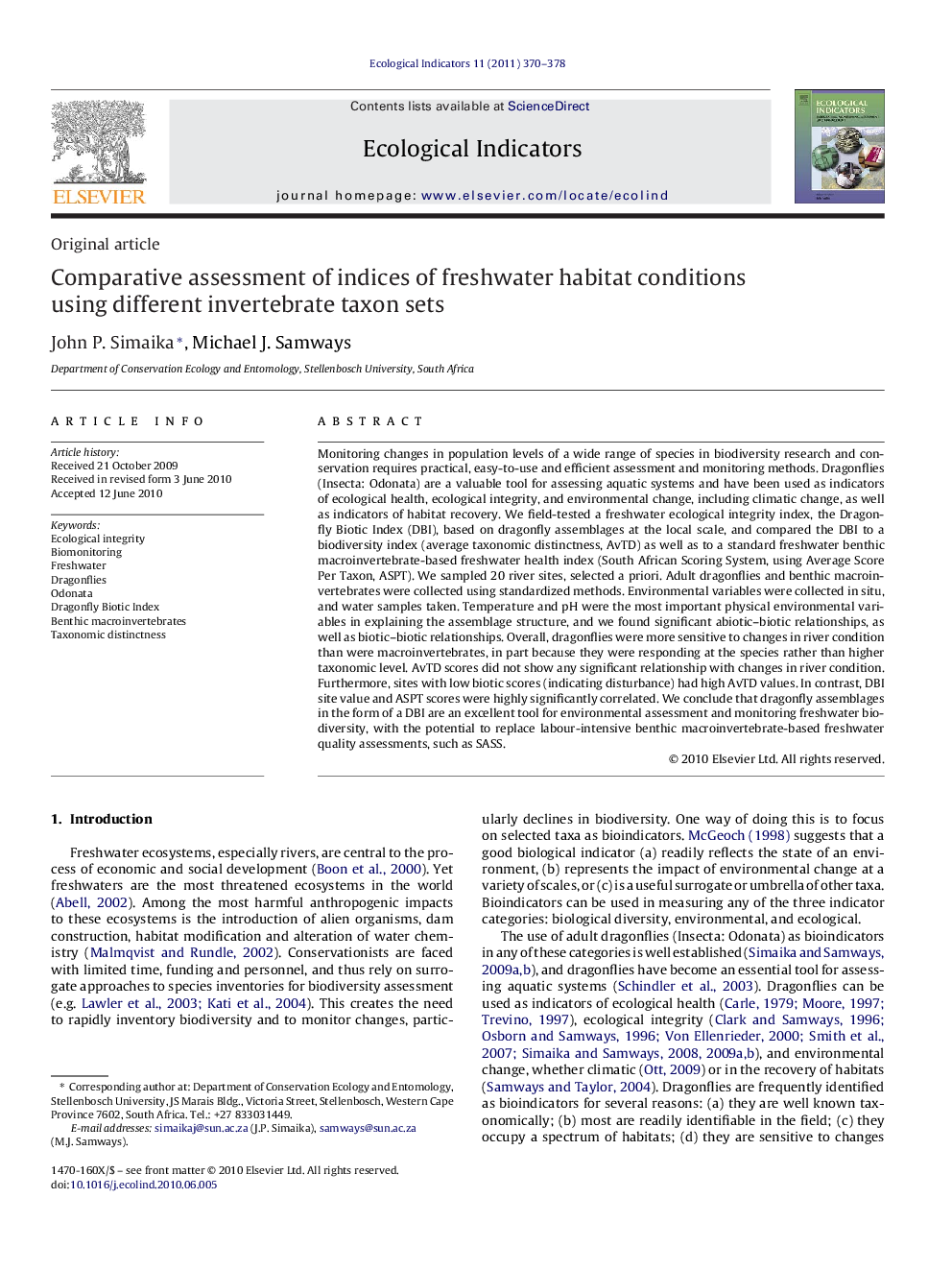| Article ID | Journal | Published Year | Pages | File Type |
|---|---|---|---|---|
| 4374113 | Ecological Indicators | 2011 | 9 Pages |
Monitoring changes in population levels of a wide range of species in biodiversity research and conservation requires practical, easy-to-use and efficient assessment and monitoring methods. Dragonflies (Insecta: Odonata) are a valuable tool for assessing aquatic systems and have been used as indicators of ecological health, ecological integrity, and environmental change, including climatic change, as well as indicators of habitat recovery. We field-tested a freshwater ecological integrity index, the Dragonfly Biotic Index (DBI), based on dragonfly assemblages at the local scale, and compared the DBI to a biodiversity index (average taxonomic distinctness, AvTD) as well as to a standard freshwater benthic macroinvertebrate-based freshwater health index (South African Scoring System, using Average Score Per Taxon, ASPT). We sampled 20 river sites, selected a priori. Adult dragonflies and benthic macroinvertebrates were collected using standardized methods. Environmental variables were collected in situ, and water samples taken. Temperature and pH were the most important physical environmental variables in explaining the assemblage structure, and we found significant abiotic–biotic relationships, as well as biotic–biotic relationships. Overall, dragonflies were more sensitive to changes in river condition than were macroinvertebrates, in part because they were responding at the species rather than higher taxonomic level. AvTD scores did not show any significant relationship with changes in river condition. Furthermore, sites with low biotic scores (indicating disturbance) had high AvTD values. In contrast, DBI site value and ASPT scores were highly significantly correlated. We conclude that dragonfly assemblages in the form of a DBI are an excellent tool for environmental assessment and monitoring freshwater biodiversity, with the potential to replace labour-intensive benthic macroinvertebrate-based freshwater quality assessments, such as SASS.
